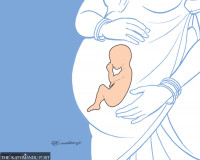Health
As million more vaccine doses arrive, experts call for massive awareness programme
Following a scramble in the first phase of campaign, micro-level planning, expansion of immunisation centres and taking people into confidence is imperative, they say.
Arjun Poudel
After India announced that it was giving a million doses of Covishield vaccine against Covid-19 last month, Nepal, like other countries in the world, decided to first inoculate frontline workers who are most vulnerable to infection.
The government came up with a figure of 430,000 such frontline workers which included health workers, supporting staff, ambulance drivers, female community health volunteers, security personnel deployed for managing the bodies of Covid-19 victims, people residing in old age homes and prisoners.
The inoculation drive started with the group on January 27 and was over on February 5, with only 171,486 people taking the jabs. The Health Ministry extended the campaign by a day and announced that anyone registered with any of the professional health workers’ associations could get vaccinated. The number that chose to be immunised then reached 184,857.
In a scramble to utilise the precious grant, the ministry then decided to inoculate journalists in Kathmandu Valley and those working in diplomatic missions. The number of those immunised in the new arrangement stood at some 20,000. In another decision, employees of financial institutions, staff at local governments and their elected representatives were chosen to be immunised.
An estimated 400,000 have now been immunised in total, close to the original target of 430,000, according to the government.
According to experts, the reason why the target of 430,000 frontline workers was not reached was due to an ineffective awareness campaign although the government came up with reasons like overestimation of their number.
Communication remains the key to any successful vaccination campaign.
“Despite having sufficient doses, we could not immunise all frontline workers, including health workers,” Dr Bhagwan Koirala, chairman of Nepal Medical Council, the national regulatory body of medical doctors, told the Post.
“Our own experience shows that micro level planning is needed and communication plays a vital role. As we are going to launch the vaccine in a large population in the second phase, authorities should use all available means of mass communication and social media to create a positive environment for vaccines.”
Another problem was the lack of access to immunisation centres as the government had decided to use only about 200 of them. Not all health workers could get to the centres, according to officials.
The Health Ministry runs over 16,000 immunisation centres across the country to immunise 700,000 babies against childhood diseases.
“Success of the immunisation in the second phase depends on expansion of immunisation centres,” Dr Baburam Marasini, former director at the Epidemiology and Disease Control Division, told the Post.
The Serum Institute of India on Sunday delivered a million doses of the vaccine Nepal bought. With it the government plans to immunise all those above 55 as this age group is considered to be highly vulnerable to the coronavirus.
There are about 3.7 million people in this age group, according to officials.
“We received one million doses today and will receive another million next week,” Dr Samir Kumar Adhikari, joint spokesperson for the Health Ministry, told the Post.
Covishield, developed by the University of Oxford and pharmaceutical giant AstraZeneca, is the preferred choice in Nepal, as it is supported by the existing storage and supply facilities.
Authorities are expecting vaccines from the World Health Organization’s COVAX facility in two weeks. The facility will provide 2,256,000 doses of the vaccine to Nepal in the first phase, which is sufficient to inoculate three percent of the population.
“We will not have any problem with storage and supply,” Adhikari said. “We will complete training and other necessary training before March 7.”
On March 7, the elderly will start being inoculated.
“Immunising the elderly population is not like the immunisation of children,” said Marisini, the former director of Disease Control Division.
According to Marasini, a study carried out in the past on health care seeking behaviour of Nepalis found that people do not access services if the centre is more than 45 minutes in walking distance.
“Elderly people cannot reach the immunisation centre if it is too far,” said Marasini. “Preparation should be made to send immunisation workers to the nearby places.”
But the government is yet to decide on the number of immunisation centres that will come into operation to vaccinate the elderly.
Although the ministry says the existing immunisation mechanisms will be employed in the second phase of Covid-19 vaccination, which will be run at the community level, the number of immunisation centres it will operate is not yet known.
“The exact number of immunisation centers is not known, as it is up to the respective local level to decide,” Dr Shyam Raj Upreti, coordinator of the Covid-19 vaccine advisory committee, told the Post. “Authorities will keep in mind access to the targeted group while setting up immunisation centers.”
Besides awareness and access, proper information on the effects of the vaccine needs to be communicated to the target group.
“People may not take the vaccine if some adverse events happen after immunisation,” said Jagat Nepali, chief of Alapot Health Post at Kageshwori Manohara Municipality, Kathmandu. “Mechanisms should be in place to respond to any such incidents promptly.”
While news of the availability of vaccines to immunise larger groups of the population may be exciting, without active participation of the people and a conducive atmosphere, the pandemic cannot be controlled, experts say.
“Along with securing sufficient doses of vaccine, we have to take people into confidence about the vaccine,” said Koirala, the Nepal Medical Council chairman. “The pandemic will not come under control unless we immunise the maximum number of our population.”




 16.35°C Kathmandu
16.35°C Kathmandu














